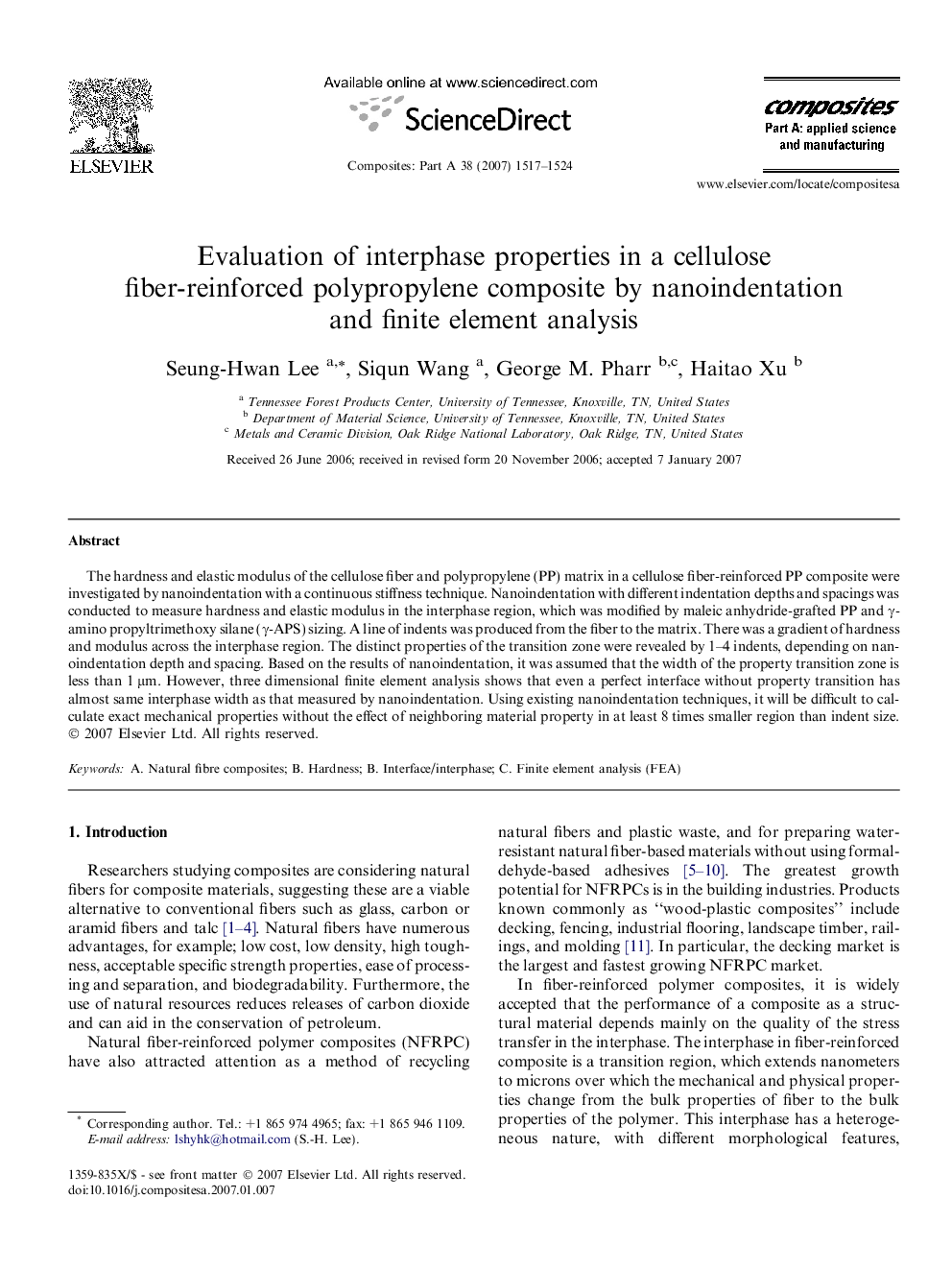| Article ID | Journal | Published Year | Pages | File Type |
|---|---|---|---|---|
| 1467658 | Composites Part A: Applied Science and Manufacturing | 2007 | 8 Pages |
The hardness and elastic modulus of the cellulose fiber and polypropylene (PP) matrix in a cellulose fiber-reinforced PP composite were investigated by nanoindentation with a continuous stiffness technique. Nanoindentation with different indentation depths and spacings was conducted to measure hardness and elastic modulus in the interphase region, which was modified by maleic anhydride-grafted PP and γ-amino propyltrimethoxy silane (γ-APS) sizing. A line of indents was produced from the fiber to the matrix. There was a gradient of hardness and modulus across the interphase region. The distinct properties of the transition zone were revealed by 1–4 indents, depending on nanoindentation depth and spacing. Based on the results of nanoindentation, it was assumed that the width of the property transition zone is less than 1 μm. However, three dimensional finite element analysis shows that even a perfect interface without property transition has almost same interphase width as that measured by nanoindentation. Using existing nanoindentation techniques, it will be difficult to calculate exact mechanical properties without the effect of neighboring material property in at least 8 times smaller region than indent size.
